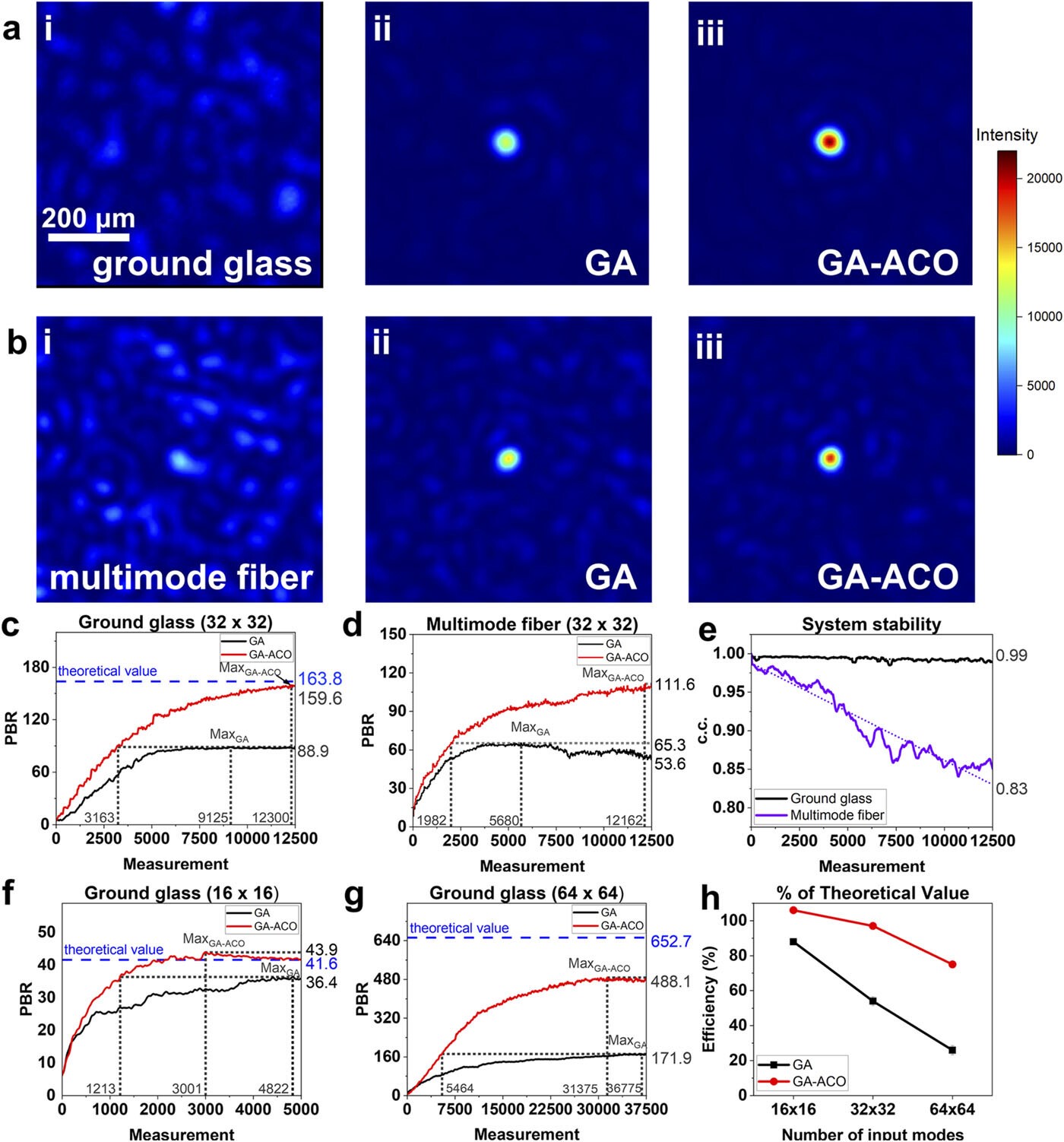Optimal efficiency of focusing diffused light through scattering media with iterative wavefront shaping
Author: Chi Man Woo†, Qi Zhao†, Tianting Zhong, Huanhao Li, Zhipeng Yu, Puxiang Lai
Corresponding author: Zhipeng Yu* (Department of Biomedical Engineering, Hong Kong Polytechnic University) eric-zhipeng.yu@connect.polyu.hk
Corresponding author: Puxiang Lai* (Department of Biomedical Engineering, Hong Kong Polytechnic University) puxiang.lai@polyu.edu.hk
Researchsquare Preprint: 1198374
Abstract: Iterative wavefront shaping is a powerful tool to overcome optical scattering and enable the focusing of diffusive light, which has exciting potential in many applications that desire localized light delivery at depths in tissue-like complex media. Unsatisfactory performance and efficiency, however, have been a long-standing problem, and the large discrepancy between theoretical and experimental results has hindered the wide applications of the technology. Currently, most algorithms guiding the iterative search for optimum phase compensation rely heavily on randomness to achieve solution diversity. It is similar to black-box optimization, in which the mechanism for arriving at a good solution is unclear. The lack of clear guidance on the new solution generation process considerably affects the efficiency of optimization. Therefore, we propose a probability-based iterative algorithm that combines the genetic algorithm and ant colony optimization to develop new solutions based on a probability map. Thanks to the clearer guidance provided by the probability map and the reduced involvement of randomness, we can obtain optimization results with optimal efficiency for single and multiple focuses behind scattering media. In addition, with the proposed algorithm, we also demonstrate higher adaptability in an unstable scattering environment and more spatially uniform optical focusing in the field of view. This study advances the state-of-the-art in the practice of iterative wavefront shaping. More importantly, the significant improvement in optimization efficiency and adaptability, if further engineered, can potentially inspire or open up wide applications that desire localized and enhanced optical delivery in situ._
 Single-point focusing results under different conditions. Output patterns captured when (a) ground glass and
(b) multimode fiber were used as the scattering/complex medium with 32 × 32 input modes (i) before optimization,
(ii) after GA, and (iii) after GA–ACO. The 200 μm scale bar is applicable to (a) and (b). (c) and (d) PBR growth
during optimization with ground glass and multimode fiber, respectively, as the scattering/complex medium. Black
and red solid lines represent the optimization results from GA and GA–ACO, respectively. Blue dashed horizontal
lines represent the theoretical enhancement value under each condition. (e) System stability during the optimization
with ground glass (black solid line) and multimode fiber (blue solid line) as the scattering/complex medium. (f) PBR
growth with 16 × 16 input modes. (g) PBR growth with 64 × 64 input modes. (h) Percentage of theoretical value
achieved by GA (black solid line with square markers) and GA–ACO (red solid line with square markers) with different
numbers of input modes when ground glass was used as the scattering medium.
Single-point focusing results under different conditions. Output patterns captured when (a) ground glass and
(b) multimode fiber were used as the scattering/complex medium with 32 × 32 input modes (i) before optimization,
(ii) after GA, and (iii) after GA–ACO. The 200 μm scale bar is applicable to (a) and (b). (c) and (d) PBR growth
during optimization with ground glass and multimode fiber, respectively, as the scattering/complex medium. Black
and red solid lines represent the optimization results from GA and GA–ACO, respectively. Blue dashed horizontal
lines represent the theoretical enhancement value under each condition. (e) System stability during the optimization
with ground glass (black solid line) and multimode fiber (blue solid line) as the scattering/complex medium. (f) PBR
growth with 16 × 16 input modes. (g) PBR growth with 64 × 64 input modes. (h) Percentage of theoretical value
achieved by GA (black solid line with square markers) and GA–ACO (red solid line with square markers) with different
numbers of input modes when ground glass was used as the scattering medium.